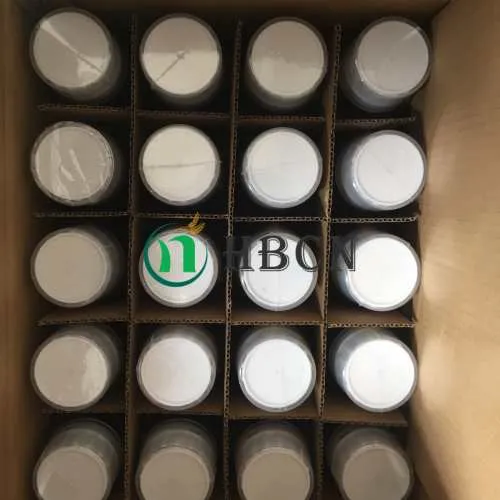
Dec . 11, 2024 19:07 Back to list
chlorpyrifos 50 cypermethrin 5 uses
The Uses and Implications of Chlorpyrifos and Cypermethrin in Pest Management
Chlorpyrifos and cypermethrin are two prominent pesticide compounds used in agriculture and pest control, each with unique properties and applications. Their effectiveness against a wide range of pests has made them staples in pest management strategies, but their usage also raises concerns regarding environmental and human health.
Chlorpyrifos Overview and Uses
Chlorpyrifos is an organophosphate insecticide that has been widely used since its introduction in the 1960s. It targets the nervous system of pests, inhibiting an enzyme essential for neurotransmission, leading to paralysis and, eventually, death. This mode of action makes it effective against a variety of agricultural pests, including insects that attack crops like corn, soybeans, and fruit trees.
In agriculture, chlorpyrifos is often applied in pre-planting soil treatments, as well as foliar applications during the growing season
. Its residual effect allows for extended pest control, making it a preferred choice among farmers who want to protect their yields from damaging pests during key growth stages.Additionally, chlorpyrifos is not limited to agricultural settings; it is also used in some residential and commercial pest control applications. The compound can effectively manage household pests such as termites, ants, and cockroaches, giving homeowners a tool for maintaining pest-free environments.
However, despite its effectiveness, chlorpyrifos has been under scrutiny due to its potential health risks. Studies have linked exposure to chlorpyrifos with neurological effects in children and developmental disorders, leading several countries to restrict its use significantly or ban it altogether. Understanding the implications of chlorpyrifos lies at the heart of the ongoing debate about the safety and sustainability of chemical pest control methods.
Cypermethrin Overview and Uses
chlorpyrifos 50 cypermethrin 5 uses

Cypermethrin is a synthetic pyrethroid, designed to mimic the natural insecticidal properties of pyrethrins found in chrysanthemum flowers. It is widely used in both agricultural and non-agricultural settings due to its effectiveness against a broad spectrum of pests, including moths, beetles, and aphids.
Cypermethrin is commonly utilized in crop protection for vegetables, fruits, and ornamental plants. Its rapid knockdown effect and low toxicity to mammals and birds make it a preferred choice for farmers aiming to minimize crop loss due to pests. Additionally, it is prevalent in residential pest control products, often found in insect sprays used to combat common household pests, including flies, mosquitoes, and cockroaches.
The compound works by disrupting the insect’s nervous system, leading to paralysis and death. Its efficacy is enhanced by its ability to remain active on treated surfaces, allowing for longer-lasting pest control compared to some older pesticide formulations.
However, similar to chlorpyrifos, cypermethrin raises concerns about environmental impacts, particularly regarding aquatic life. It is highly toxic to fish and other aquatic organisms, which has prompted guidelines to limit its runoff from agricultural fields into water bodies. Responsible use and adherence to application guidelines are crucial in mitigating environmental risks.
Balancing Efficacy with Safety
The use of chlorpyrifos and cypermethrin presents a classic dilemma in agriculture the need for effective pest control versus the imperative to protect human health and the environment. As modern agriculture faces challenges from pest resistance and the increasing demand for produce, the reliance on chemical pesticides remains a controversial topic.
Integrated Pest Management (IPM) strategies are increasingly adopted as a comprehensive approach to pest control, combining the use of chemical pesticides with biological, cultural, and mechanical methods. This holistic view aims to minimize reliance on synthetic chemicals while maximizing agricultural productivity and sustainability.
In conclusion, chlorpyrifos and cypermethrin have played significant roles in pest management across various sectors. However, as awareness of their potential risks grows, the agricultural community must navigate the complexities of pest control with diligence and care. The push towards safer, more sustainable practices may herald a new era in pest management, paving the way for innovative solutions that prioritize both crop health and environmental integrity.
-
Herbicide Mesotrione: Advanced Herbicide Solutions for Corn Field Weed Control
NewsJul.12,2025
-
Buy Penoxsulam Herbicide - Selective Weed Control Solution for Lawns & Crops
NewsJul.08,2025
-
Malathion and White Oil Effective Insecticide for Citrus & Ornamentals
NewsJul.08,2025
-
Best Section Fungicide Solutions Effective Carbendazim & Copper Fungicides for Citrus Trees
NewsJul.08,2025
-
Types of Herbicides Explained Discover 5 Types of Selective Herbicides for Effective Weed Control
NewsJul.07,2025
-
Buy Bifen Chemical – Safe Termiticide for Dogs & Effective Pest Control Solutions
NewsJul.07,2025
